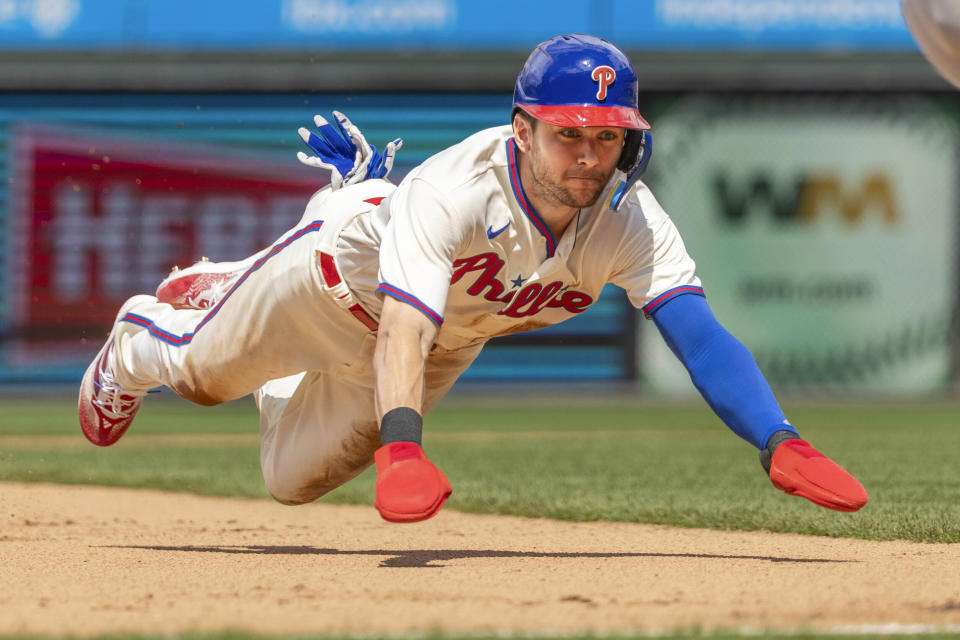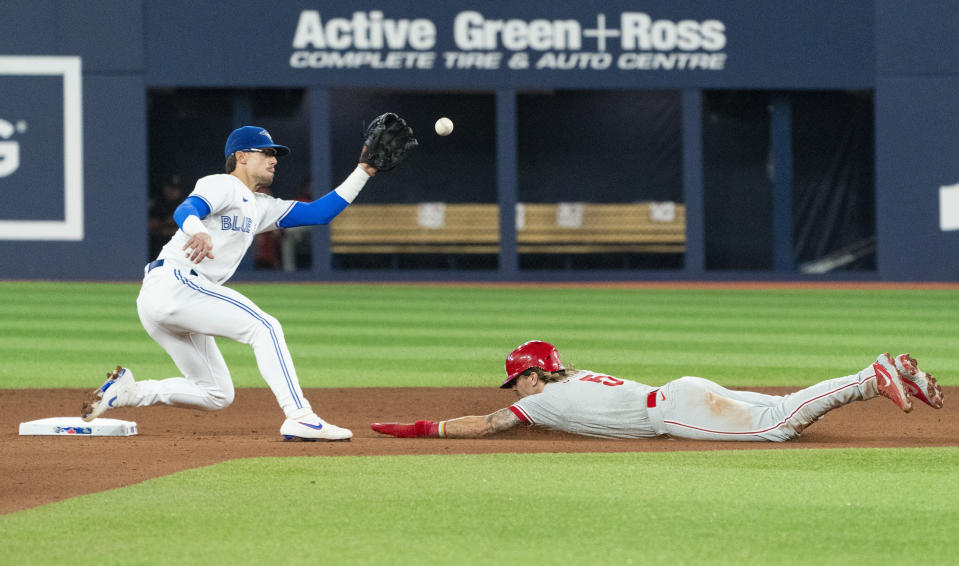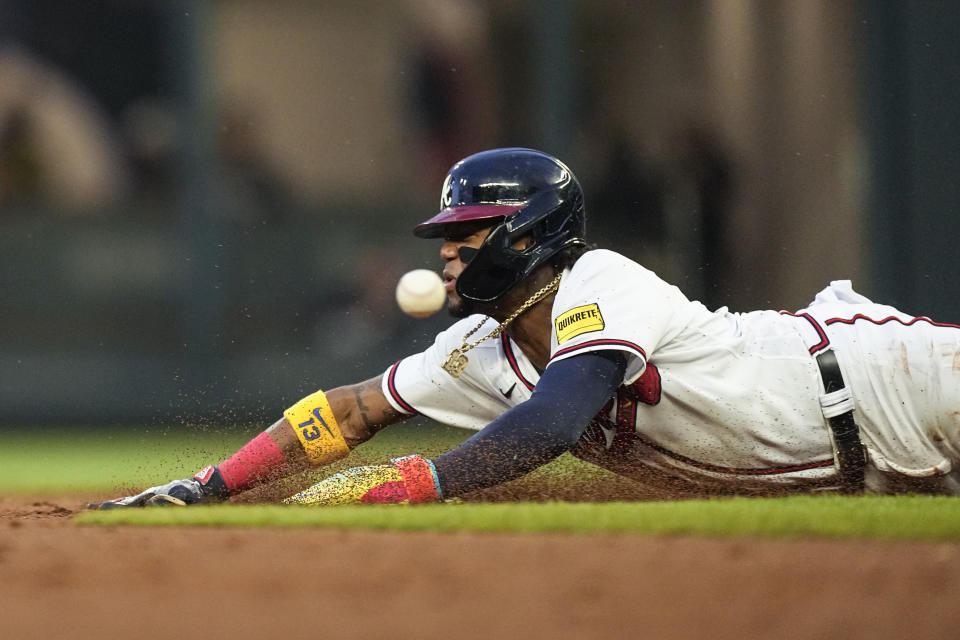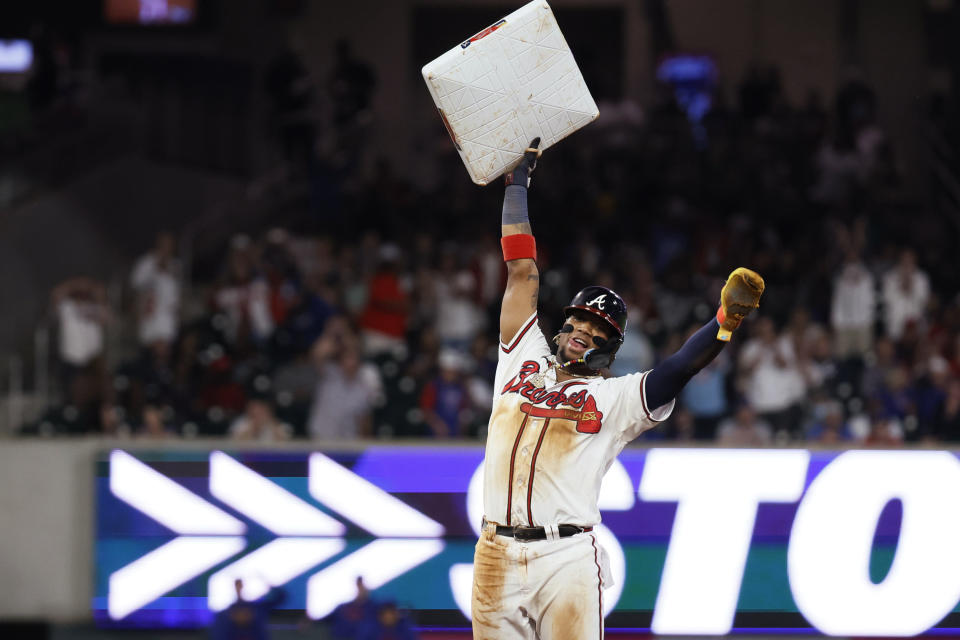MLB baserunners went wild last summer. In Year 2 with new rules, steals could keep piling up
CLEARWATER, Fla. (AP) — Trea Turner's speed and instincts helped him go perfect on the bases.
The Philadelphia Phillies’ star shortstop set a major league record for most steals in a season without getting caught, going 30-for-30 on the basepaths last year.
He wasn’t the only player who had a lot of success.
Thanks to several rules changes, runners swiped bags more proficiently and stolen bases across the majors increased 41% from 2,486 in 2022 to 3,503 in 2023. That was the most in a season since 1987.
Overall, basestealers had a success rate of 80.2%, up from 75.4% in 2022. Turner is one of only six players in MLB history to steal at least 20 bases in a season at a 100% rate.
National League MVP Ronald Acuña Jr. led the major with 73 steals, the most since Jose Reyes had 78 in 2007. Esteury Ruiz swiped 67 and Corbin Carroll stole 54.
“There’s a lot that goes into it, the count, how many outs, the score, who’s hitting behind you, knowing the pitcher, how well do you read him, the catcher’s tendencies,” Turner said earlier this month about the art of stealing bases. “You just gotta be comfortable making it. I think it’s a lot of rhythm. I look at it as hitting or fielding where it’s like, sometimes I feel stuck and I can’t see it. And then sometimes you’re seeing everything so quick, you know I got this easy.”
The main reason stolen bases went up was the new rule limiting pitchers to two disengagements per batter. Pitchers can only disengage from the pitching rubber — either to call timeout or to attempt a pickoff throw — twice per plate appearance. If a runner advances during a plate appearance, the limit on disengagements is reset.
“When you limit pickoff attempts, that makes it so much easier,” Turner said.
Bryson Stott, Turner’s teammate and double-play partner, swiped 31 bags in 34 tries last season. He said the disengagement rule allowed him to be more aggressive on the bases.
"I still have to get a jump off the pitcher and still have to beat the catcher’s throw and it’s still the same catchers who were throwing out 50 guys a season ago,” Stott said. “But I think you’re more comfortable in knowing that they don’t want to waste a pickoff in certain spots so your leads can be a little bigger, you can take more chances.
“If Bryce Harper is at the plate and I’m on first base and the pitcher has two stepoffs, is he going to waste a stepoff on me or does he want to step off, gather his thoughts and see what he wants to throw Bryce? So it’s just certain things throughout the game that kind of affect that.”
Other rule changes also contributed to some degree to the rise in steals. A pitch clock implemented to speed up games forced pitchers to start their delivery in 20 seconds if there was a baserunner. The time is decreasing to 18 seconds this season.
“I actually thought the clock would be a little bit more important than it was,” Turner said. “I didn’t think it was as easy to time it up with the clock as I thought at first.”
Larger bases were introduced to improve player safety and encourage more steals. Bases went up to 18-square inches from 15-square inches.
“Maybe it made a difference on a handful of plays that were bang-bang but limiting pickoffs was the important factor,” Turner said.
The big question: what happens in Year 2 with the new rules? Baserunners and their coaches are bracing for pitchers and catchers to make adjustments.
“Teams are going to find ways to try to eliminate them,” said Paco Figueroa, the Phillies’ first base/baserunning/outfield coach. “Maybe pitchers will use the second or third pickoff more, or maybe pitchers need to start being quicker to the plate.”
Pitchers are permitted a third pickoff try, but it’s a balk if the runner returns safely. Holding runners on base was a point of emphasis this spring for Chicago White Sox right-hander Michael Kopech, who gave up 32 stolen bases, second-most in the majors last season.
“We’ve worked on the slide-step a little bit,” said Kopech, who gave up 15 steals in 2022. “But for me, there’s more of a comfort zone with the modified leg lift than a true slide step. It’s just being quick to the plate without being rushed.”
Cubs right-hander Kyle Hendricks also needed to address how to hold runners better after his steals allowed went up from nine in 2022 to 23 in last season.
“Big-time focus on it at all times,” Kendricks said. “Throwing my bullpens, there’s a focus on it, of looking the same in the stretch every time, not giving a different look or anything that could tip off the runner to get an early jump, and just making sure you’re quick to the plate.
“It’s gonna be really tough. We know there’s going to be a lot of running in the game, so it’s definitely a focus of ours. Just going to have to really be hyper aware of it, and hyper aware of yourself if you’re tipping anything to give them a chance to get off early, and then making sure you’re quick enough to the plate to give our guys a chance.”
Some players are taking a different approach on the basepaths. New York Yankees rookie shortstop Anthony Volpe uses a vault or momentum lead, which is more widely used in college ball. Instead of the typical three-to-four step lead, Volpe takes a small, two-step lead and then shuffles before taking off.
He led the Yankees with 24 steals but also was caught five times.
“I personally can’t do it,” Stott said. “I worry that the second I take a jump, they’re going to pick me off. That is an art, and he’s really good at it. He’s under control with it. You see a lot of guys who are doing the jump lead and they accidentally jump seven feet and then the pitcher is still holding the ball.
"But his leads aren’t very big and he takes the jump step and he knows the pitchers. I think a lot of guys are starting to pick up on that and seeing how he was kind of running wild.”
New rules. Different ideas. More running. It all adds excitement to baseball.
___
AP freelance writer Jack Thompson contributed to this report.
___
AP MLB: https://apnews.com/hub/mlb




